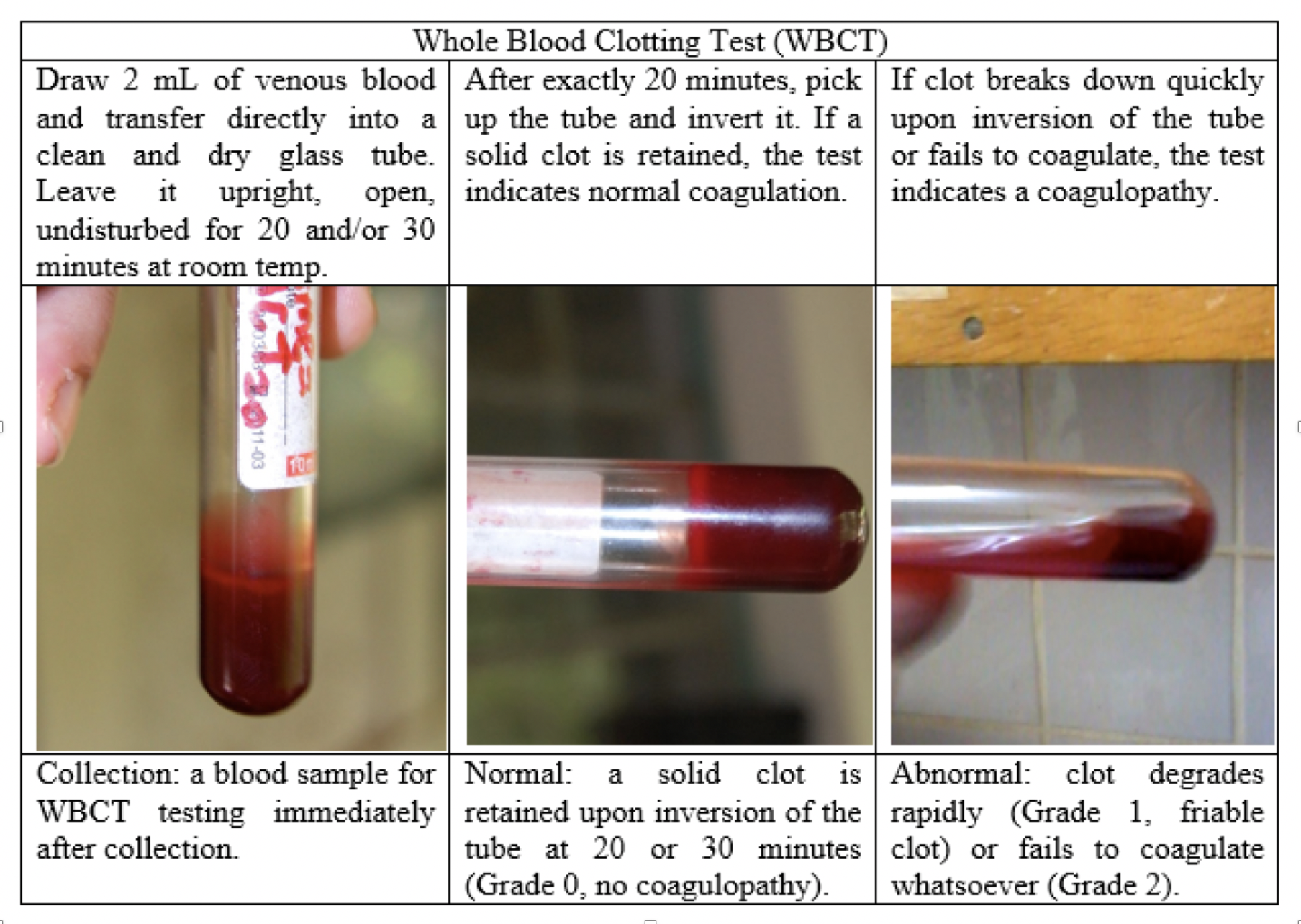Whole Blood Clotting Test (WBCT)
A Diagnostic Tool for Snake Envenomation in Remote Environments
The whole blood clotting test (WBCT) is a simple but critical bedside gross examination used in the assessment, diagnosis, and therapeutic monitoring of snakebite patients in the developing world and remote environments. It should be performed as part of the initial workup and serial reassessments on all snakebite patients in the developing world. Read on for more information regarding the test, and see the link at the bottom to review our new peer-reviewed paper on use of the WBCT for diagnosis and treatment of viper envenomations in sub-Saharan Africa. Click the link below for a downloadable, printable one-page reference sheet on how to perform and interpret the test.
Click here to download an instruction sheet on collection and interpretation of the WBCT
Refer to the diagram above regarding instructions for performing the test. Please note that at the 20 - 30th minute the tube is gently picked up and tilted 90 degrees; a stable solid clot retained within the tube is scored “Grade 0” and indicates normal coagulation. Abnormal results are scored “Grade 1” for a partial, semisolid clot that breaks apart and detaches from the glass tube shortly after it is turned or “Grade 2” for completely incoagulable liquid blood that pours out of the tube immediately. Attempting to score the test earlier than 20 minutes will not yield accurate results due to the consumptive mechanism of the coagulopathy. Using a healthy donor as a control is ideal to confirm questionable findings.
WBCT testing should continue throughout the course of care to monitor for secondary resumption of venom-induced consumptive coagulopathy. After control of the envenomation has been achieved, reassess WBCT every 24 hours throughout the course of hospitalization. It is important to remember that the WBCT must be interpreted in the context of the larger clinical picture. If a patient has improved in all parameters except for a persistent abnormal WBCT, it may reflect an inertia in replenishment of depleted clotting factors after a severe hemotoxic envenomation. If the venom is active then hematocrit should continue to decrease or signs of ongoing hemolysis or bleeding should be present.
For more detail on how to effectively use the WBCT, see our recent 2018 publication Delayed double reading of whole blood clotting test (WBCT) results at 20 and 30 minutes enhances diagnosis and treatment of viper envenomation from the Journal of Venomous Animals and Toxins including Tropical Diseases.

